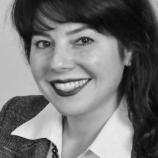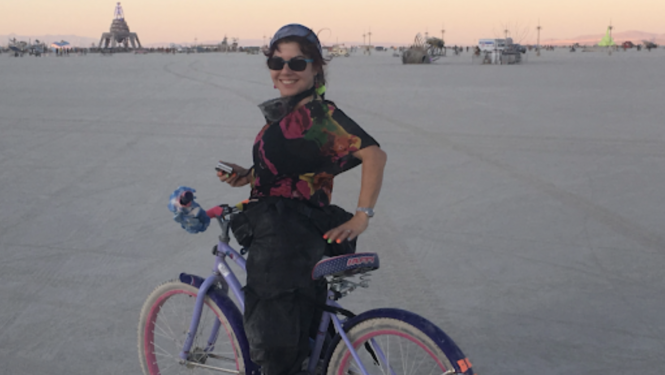A conversation with Andrea Orlando, Community Director of the National Consortium for Creative Placemaking
This past week I had the opportunity to have a conversation with Andrea Orlando, Community Director for the National Consortium for Creative Placemaking (NCCP) — an organization that supports community conversations that offer tools to identify challenges and opportunities to creatively and collectively activate change.

As one of three core team members, Andrea established the NCCP’s CreativePlace podcast and virtual Community Coffee Talks, and directs all other communications for the National Consortium for Creative Placemaking. Through this work, and her travels to all corners of the United States, she fosters a rich community of creative placemakers. Andrea is also a leader in the NCCP Summits that you may have seen listed on Kindling — events that bring together creative placemakers from different regions around the country to cross pollinate and learn from one another. Hailing from central New Jersey, Andrea and I share similar East Coast roots that made it easy for us to converse with a jovial common language.
So, what is creative placemaking?
Creative placemaking is a process where members of a community — visionaries, artists, arts and cultural organizations, community developers and other stakeholders — work together to bring about real world change.
The NCCP describes it as such:
Creative placemaking happens when artists and arts organizations join their neighbors in shaping their community’s future, working together on place-based community outcomes. It’s not necessarily focused on making places more creative; it’s about creatively addressing challenges and opportunities. Success is measured in the ways artists, formal and informal arts spaces, and creative interventions have contributed toward community outcomes. For example, after attending a 2018 & 2019 NCCP Summit, participant Rhea Pirch of the Little River Arts Council in Mentone, Alabama activated a massively successful project to improve an underused walkway. There, she organized a voluntary community collaboration that brought beautiful art and stationary musical instruments to the space for pedestrians to enjoy and engage with.
Devyn: I think there is a lot to be said for how creative placemaking is a common vision of both NCCP and Burning Man. If I’m explaining it in the context of your organization and my organization and how they share goals — how would you describe your organization’s function and what that overlap is?
Andrea: Creative placemaking is artmaking with a purpose, and that purpose is something in which a group of people collaborate, have a consensus and decide there is going to be an art intervention. Essentially, we organize peer-to-peer education. Our roots are in acting more like consultants and working in a community to facilitate conversations. In that sense, we work like Burning Man to create a decentralized community purpose around shared principles.
Devyn: What is the real impact of the creative placemaking work that you do in the world? Can you provide some examples or a story of what you have found to be transformative about this work?
Andrea: This work is transformative because it’s the opposite of a top-down approach. It’s bottom up. It’s what happens when neighbors, local business owners, artists and public officials get in a room together and ask, “What can we do together to make this place we inhabit better for all of us? How do we tap the unique power of art and creative process to address our challenges in a holistic way?”
Here’s an excellent example of one success story born out of the NCCP’s work:
Elizabeth Simpson Howard sparked a revival of art and culture that gave a boost to the economy in downtown Waycross, GA after attending a NCCP summit in Chattanooga, TN in 2018. It was there that she met presenters from the Chattanooga-based Thrive Regional Partnership, who talked about design process. Howard, then Executive Director at the Okefenokee Heritage Center, was so impressed, she stayed up all night that night planning and researching ideas for her rural community of approximately 30,000. The result was a pop-up sidewalk chalk art festival in September of that year. The event sparked a renaissance. Howard said she received calls afterwards from the mall and local hospital who sought to keep the creative spirit alive. One pair of chalk artists turned their art making into a full-time endeavor when they later opened up a brick and mortar studio downtown. The city was inspired to create a new position for a downtown development authority director, who focussed on arts as a catalyst for economic development. (Source: Okefenokee Heritage Center update from Sept. 22, 2018, Okee Arts Fest)
Devyn: It’s been mentioned that you are one of three core team members in your group. Is volunteerism an essential part of your functioning?
Andrea: Yes! It’s how we’ve been able to organize all the programs we have.

Devyn: When looking at the values and missions shared on your website, it jumps out that Burning Man Project and NCPP seem to share many of the same buzzwords — a participatory culture, diversity in all its forms, co-creation, volunteerism and collaboration. Considering our alignment in values and mission, I’m curious, is anyone in the NCCP involved with Burning Man culture?
Andrea: Well, not originally, but last year, I was lucky enough to become the ambassador and go to the event.
. . . . .
After attending the event, Andrea noted that Burning Man Project’s Principles of Immediacy, Radical Self-Expression, and Gifting stood out as guidelines that would be valuable adoptions by those who have interest in making positive change in their own communities. There’s a reason why these Principles allow us to function as innately integrated and wildly creative participants in this place we call “home”. Why not carry these values into the default world as well?
If you are interested in these changemaking conversations, seeking collaborators for new, creative activations, or gaining tools and knowledge for how to implement ideas within your own community — the NCCP webinars are a great place to explore.
You can read more about Andrea’s experience in Black Rock City in her blog piece, “Lessons on Building Community from Burning Man”, and register to attend any of the upcoming NCCP webinars on Kindling.
November 17, 2020 – Building More Resilient Communities Through Creative Placemaking
December 1, 2020 – Artful Urban Design Part 1: Growing Your Cultural Ecosystem
January 12, 2021 – Artful Urban Design Part 2: Public Art for Better Mental and Physical Health
February 16, 2021 – Financing Creative Placemaking
April 20, 2021 – Artists As Social Change Agents
May 11, 2021 – Working With Artists on Creative Placemaking
June 15, 2021 – Ethics and Competencies in Creative Placemaking
July 13th, 2021 – History of Creative Placemaking in the United States Part 1
Cover photo provided by photographer Heather O. Jones

